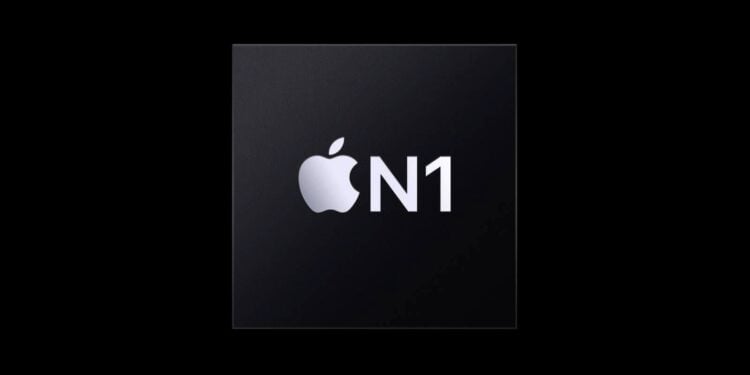Apple is using a new internal development for the iPhone 17 series: the N1 chip for wireless networking. This represents another step toward hardware independence – this time in the areas of Wi-Fi, Bluetooth, and Thread. The focus is on increased performance, better energy efficiency, and deeper integration with other components such as the A19 Pro SoC.
Control over key hardware components has played an important role for Apple for years. Following its entry into its own cellular modems with the C1 series and the well-known A and M chips for main processors, the N1 now follows, a chip that covers all wireless connections. With this, Apple is not only further developing the infrastructure for current iPhones but is also laying the foundation for future devices – from the iPhone and the iPhone Air to potential smart home products.
N1 installed for the first time in all iPhone 17 models
The new N1 chip is used in the entire iPhone 17 series, including the iPhone Air. Apple developed it as the central solution for Wi-Fi 7, Bluetooth 6, and Thread, replacing external third-party modules that previously handled wireless communication. According to Apple, the switch not only brings support for the latest wireless standards but also noticeable improvements to everyday features. AirDrop and Personal Hotspot are particularly mentioned. Both benefit from the increased stability and speed enabled by the N1.
Performance improvements for AirDrop and Hotspot
AirDrop and Personal Hotspot are among the features that rely heavily on reliability for Apple users. Disconnected connections or long wait times have repeatedly caused frustration in the past. With the N1 chip, Apple aims to address precisely these issues. Thanks to deep integration into the system, connections are more stable, transfers are faster, and the susceptibility to errors is reduced.
The N1 works closely with the A19 Pro SoC
Another crucial aspect is the collaboration between the N1 and the A19/A19 Pro main processor. Apple developed both chips together with the goal of reducing energy consumption without sacrificing functionality. The N1 takes over certain background tasks that would otherwise occupy the larger SoC. This allows the A19 Pro to sleep more often, which in turn extends battery life. Background processes such as location detection and network discovery continue to run – just with significantly lower energy requirements.
Tracking without GPS – through Wi-Fi access points
The N1 chip also uses Wi-Fi access points to determine its position. This saves energy because the GPS module doesn't need to be constantly active. Wi-Fi-based positioning consumes less power while delivering accurate results, especially indoors or in urban environments. According to Arun Mathias, VP of Wireless Software Technologies and Ecosystems at Apple, this process runs entirely in the background (via CNBC ). The N1 analyzes the available Wi-Fi signals and transmits the information to the system—without waking up the main processor.
Concrete advantages in battery life
According to Apple, the energy savings have a direct impact on battery life. This is particularly noticeable on the iPhone Air, which is already designed for energy efficiency. But the iPhone 17 Pro and Pro Max models also benefit. By shifting certain tasks to the N1, battery life is noticeably extended – without compromising functionality.
Future prospects: Use in Apple Home products
The N1 is still in its early stages, but Apple apparently plans to incorporate it into other devices as well. Rumors indicate that at least two Apple Home products will soon be equipped with the chip. This would continue the strategy of outsourcing as many functions as possible to its own chips.
Apple takes control of the wireless future
With the N1 chip, Apple is taking control of a new key function: wireless connectivity. Combining Wi-Fi 7, Bluetooth 6, and Thread in a dedicated module improves performance in many everyday functions. At the same time, Apple reduces energy consumption, which directly benefits battery life. The close integration with the A19 Pro SoC demonstrates Apple's consistent commitment to hardware development. The N1 is therefore not just a technical upgrade—it's a strategic tool for future developments. (Image: Apple)
- iPhone 17 Pro Max: Charging performance, power adapters and cables tested
- Apple relies on 3D recordings for the iPhone 17 market launch
- iPhone Air in iFixit Teardown: What's Inside the Thinnest iPhone
- iPhone 17 Pro Max overtakes Galaxy S25 Ultra in battery test
- iPhone Air in endurance test: How robust is Apple's new smartphone
- Apple releases Final Cut Pro update with full iPhone 17 integration
- watchOS 26.0.1: Exclusive update for the Apple Watch Ultra 3
- iPhone 17 teardown: Batteries, cameras, and modems revealed
- Strong pre-orders: Apple increases iPhone 17 production
- OpenAI relies on Apple suppliers for new devices
- Two iPhone 17 models show wear after a short time
- iPhone 17, Apple Watch & AirPods Pro 3 now in stores
- A rare glimpse into Apple's AirPods labs
- iPhone 17 battery test: Runtime of all models in direct check
- Will the iPhone Air bend? This test shows
- iPhone 17 & iPhone 17 Pro Reviews: Display, Battery, Performance
- iPhone Air reviews: Is the thinnest iPhone worth it?
- AirPods Pro 3 introduce advanced acoustic seal test





